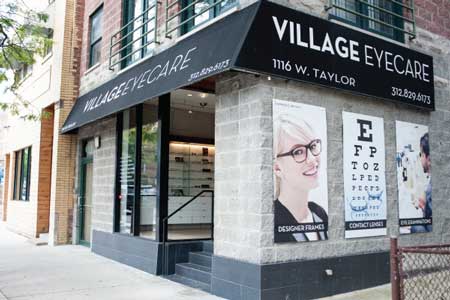Eye Center Andalusia: State-of-the-Art Look After All Ages
Eye Center Andalusia: State-of-the-Art Look After All Ages
Blog Article
Understanding the Different Vision Correction Procedures Available for Clearer View
In the world of vision modification procedures, a wide variety of alternatives exist to attend to refractive mistakes and give people with clearer view. From the extensively recognized LASIK surgery to much less invasive procedures like PRK and implantable lenses, the area of ophthalmology provides a variety of techniques customized to match different requirements and choices. Each treatment includes its own collection of factors to consider, benefits, and possible risks. Understanding the subtleties of these vision correction techniques is important for making informed decisions concerning one's aesthetic health. Let's check out the details of these treatments and clarified the path to attaining enhanced vision clearness.
LASIK Surgical Procedure
LASIK surgery is an usual refractive procedure used to remedy vision troubles such as astigmatism, farsightedness, and nearsightedness. This medical strategy, which represents Laser-Assisted sitting Keratomileusis, aims to reshape the cornea to improve exactly how light is concentrated on the retina, eventually boosting vision quality. Throughout the treatment, a thin flap is created on the cornea, and a laser is made use of to remove exact quantities of cells to improve it suitably. This improving enables light to be properly concentrated onto the retina, fixing refractive mistakes.
Among the key benefits of LASIK surgery is the fast renovation in vision experienced by clients. Several people notice a substantial enhancement in their vision promptly after the procedure. Furthermore, a lot of patients report very little pain and discomfort during the surgical treatment and recovery period. The healing time for LASIK is relatively quick, with many people going back to their daily activities within a day or 2 post-operation. Generally, LASIK surgical treatment is a prominent selection for people looking for a long-term remedy for their vision issues.
PRK Treatment

PRK is an appropriate option for people with slim corneas or those at a greater threat of eye injuries, as it does not include creating a corneal flap. The recuperation process for PRK is slightly longer contrasted to LASIK, as the epithelium needs time to regrow. Clients might experience discomfort and blurry vision for a few days adhering to the procedure.
In spite of the longer recovery time, PRK can generate outstanding outcomes in vision improvement, making it a valuable alternative for those who may not appropriate candidates for LASIK surgical procedure. - Neurologist Andalusia
Implantable Lenses
In contrast to PRK where the cornea is improved straight, implantable lenses provide one more approach for dealing with vision by putting synthetic lenses inside the eye. This procedure is particularly useful for individuals with high degrees of farsightedness, astigmatism, or nearsightedness that might not be appropriate prospects for laser surgical procedures like LASIK or PRK.
Implantable lenses, additionally referred to as phakic intraocular lenses, work by supplementing the eye's all-natural lens with a fabricated one. These lenses can be placed before the all-natural lens (former chamber) or behind the iris and in front of the all-natural lens (posterior chamber) By readjusting the power and positioning of these lenses, ophthalmologists can efficiently deal weblink with refractive mistakes and boost visual skill.
One benefit of implantable lenses is that they are removable and exchangeable, offering versatility for future adjustments. Nevertheless, just like any kind of procedure, there are threats included, such as infection or cataract formation. Clients considering implantable lenses need to seek advice from with an eye care expert to figure out one of the most suitable choice based on their individual needs and eye health.
Corneal Rings

The treatment for inserting corneal rings is minimally invasive and fairly fast, typically my sources done as an outpatient treatment. Throughout the surgical treatment, the ophthalmologist makes a little laceration in the cornea and inserts the rings at a particular deepness. Once in position, the rings aid to improve the cornea, offering a smoother surface for light to go into the eye, which can result in more clear vision.
Corneal rings are considered a reversible treatment, as they can be gotten rid of or replaced if needed. While they might not totally remove the requirement for glasses or call lenses, corneal rings can dramatically boost vision top quality and total aesthetic comfort for individuals with keratoconus or other corneal abnormalities.
Refractive Lens Exchange
Following the improvement of corneal abnormalities with treatments like corneal rings, one more vision modification strategy that can attend to refractive errors is Refractive Lens Exchange (RLE) RLE is a surgery that includes replacing the eye's all-natural lens with a man-made intraocular lens (IOL) to fix refractive mistakes such as nearsightedness, farsightedness, and presbyopia. This procedure is especially valuable for individuals that might not be ideal candidates for treatments like LASIK or PRK as a result of aspects such as thin corneas or high refractive mistakes.
Healing time for RLE is reasonably quick, and individuals can anticipate improved vision quickly after the procedure. As with any kind of surgical procedure, prospective risks and problems exist, so a detailed examination with an eye treatment expert is essential to identify if RLE is the best vision adjustment option.
Conclusion

In the realm of vision correction treatments, a plethora of alternatives exist to attend to refractive mistakes and give individuals with clearer view.LASIK surgery is an usual refractive treatment utilized to deal with vision issues such as astigmatism, nearsightedness, and farsightedness.While likewise a common refractive procedure, the PRK (Photorefractive Keratectomy) strategy differs internet from LASIK surgical treatment in its approach to remedying vision troubles.Adhering to the correction of corneal abnormalities with treatments like corneal rings, an additional vision correction strategy that can attend to refractive errors is Refractive Lens Exchange (RLE) LASIK surgical treatment, PRK procedure, implantable lenses, corneal rings, and refractive lens exchange are all choices that can deal with different vision concerns.
Report this page